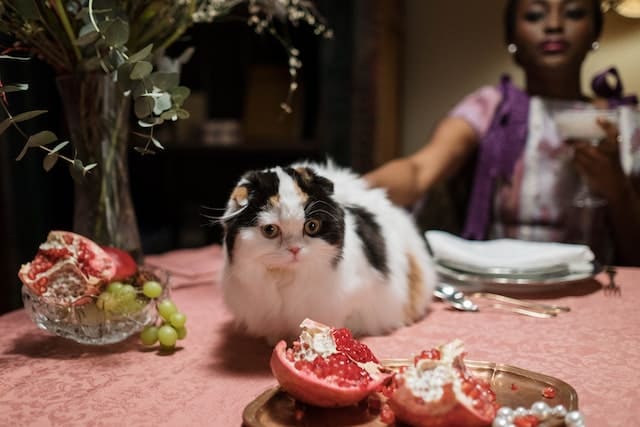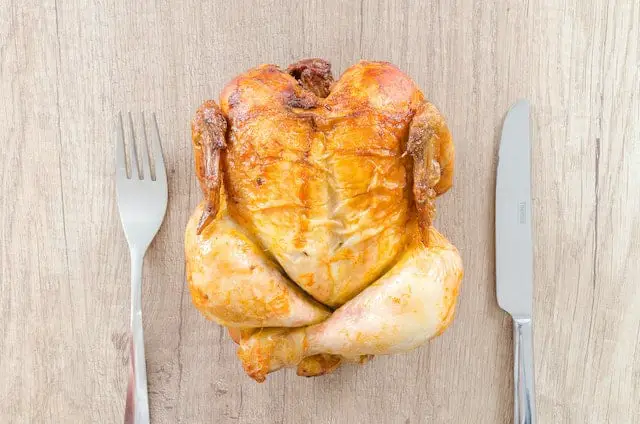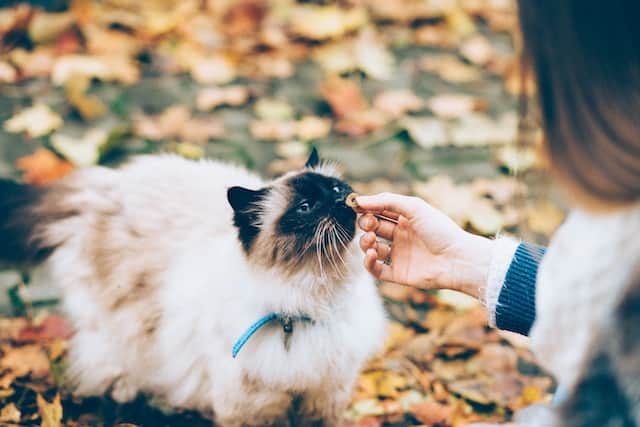What is considered low fat in cat food? Do you ever wonder what constitutes low fat in cat food? When it comes to keeping your feline friend healthy and happy, understanding the recommended fat content is crucial. In this article, we will delve into the world of cat nutrition and explore what is considered low fat in cat food.
To begin with, let’s unravel the mystery behind recommended fat content for cats. Fat plays a vital role in their diet as it provides energy and helps absorb essential vitamins. However, excessive fat intake can lead to obesity and related health issues. That’s why it’s important to find the right balance.
By learning what is considered low fat in cat food, you can make informed decisions about your furry companion’s diet to ensure they maintain a healthy weight without compromising on taste or nutrition.
In this comprehensive guide, we will discuss the benefits of choosing low-fat cat food and highlight key factors to consider when selecting such products for your feline friend. So, if you’re ready to enhance your knowledge about feline nutrition and discover how to provide your beloved pet with optimal nourishment, let’s embark on this enlightening journey together!
What is Considered Low Fat in Cat Food: The Recommended Fat Content for Cats

If you’re looking to ensure your cat stays healthy and trim, it’s important to understand the recommended fat content for their food.
Fat is an essential nutrient in a cat’s diet, providing them with energy and aiding in the absorption of certain vitamins. However, too much fat can lead to weight gain and obesity, which can increase the risk of various health issues such as diabetes and joint problems.
The recommended fat content for cats typically ranges from 10% to 20% of their daily caloric intake.
The importance of fat in a cat’s diet cannot be overstated. Fat provides a concentrated source of energy that is necessary for maintaining their overall health and vitality. Additionally, certain vitamins like A, D, E, and K are fat-soluble, meaning they require dietary fats for proper absorption by the body. Without adequate fat intake, these vitamins may not be properly utilized by your cat’s system.
Choosing a low-fat cat food can offer several benefits for your feline friend. First and foremost, it can help prevent excessive weight gain and promote weight management. By keeping their fat intake within the recommended range, you can support your cat in maintaining a healthy body condition without depriving them of essential nutrients. Furthermore, low-fat options often contain higher levels of protein to compensate for the reduced fat content. Protein is crucial for muscle development and repair in cats, so opting for a low-fat cat food can provide additional benefits beyond just lowering their overall calorie intake.
By understanding the recommended fat content for cats’ diets and choosing low-fat alternatives wisely, you can contribute to your furry companion’s long-term health and well-being. Making informed decisions about their nutrition will not only help them maintain optimal weight but also ensure they receive all the essential nutrients they need to thrive.
Now let’s explore further how choosing low-fat cat food can benefit your feline friend’s overall health!
Benefits of Choosing Low Fat Cat Food

When it comes to weight management in cats, choosing low fat cat food can be highly beneficial. By opting for low fat options, you can help your cat maintain a healthy weight and reduce the risk of obesity-related health issues.
Additionally, low fat cat food can provide support for cats with specific dietary needs, such as those with pancreatitis or gastrointestinal disorders.
Weight Management in Cats
To help your kitty maintain a healthy weight, it’s essential to choose cat food that is labeled as low fat. Feline obesity is a common problem among cats, and it can lead to various health issues such as diabetes, arthritis, and heart disease. By selecting cat food that falls within the healthy weight range for felines, you are taking an important step in preventing these potential problems.
Low-fat cat food is specifically formulated to provide all the necessary nutrients while reducing the calorie content. It typically contains lean sources of protein, such as chicken or fish, which help support muscle development without adding extra fat. Additionally, low-fat cat food often includes high-fiber ingredients like brown rice or vegetables that promote satiety and prevent overeating.
These specialized formulas can help your furry friend feel full and satisfied while still maintaining a healthy weight.
Transitioning into the subsequent section about ‘support for cats with specific dietary needs,’ it’s important to note that there are various factors that may require additional considerations when choosing cat food beyond just weight management.
Support for Cats with Specific Dietary Needs
Cats with specific dietary needs can find support through specialized formulas that cater to their unique requirements. These formulas are designed to provide the necessary nutrients while addressing specific health conditions or concerns.
Here are four ways in which these specialized diets can offer support:
1. Supportive Supplements: Some cat food formulas for specific dietary needs may contain additional supplements that help promote overall health and well-being. These formulas can include omega-3 fatty acids, which can benefit cats with skin allergies or joint issues, and antioxidants, which help support the immune system.
2. Alternative Diets: For cats with certain dietary restrictions or sensitivities, there are alternative diets available that use novel protein sources or limited ingredient lists. These diets aim to reduce the risk of allergic reactions or digestive upset by avoiding common allergens such as chicken or grains.
3. Weight Management: Some specialized cat food formulas are designed for weight management purposes, helping cats maintain a healthy weight or lose excess pounds. These formulas typically have lower calorie content and increased levels of dietary fiber to promote satiety and prevent overeating.
4. Digestive Health: Cats with sensitive stomachs or gastrointestinal issues may benefit from specialized diets that focus on digestive health. These formulas often contain highly digestible ingredients and added probiotics to support a healthy gut microbiome.
Considering these supportive options when selecting low-fat cat food is essential in meeting your cat’s individual needs without compromising their overall health and well-being.
Factors to Consider When Selecting Low Fat Cat Food

When selecting low-fat cat food, there are two key factors to consider: reading and understanding cat food labels, as well as consulting with a veterinarian for recommendations.
By carefully reading and understanding the labels on cat food products, you can determine the fat content and ensure that it meets your cat’s dietary needs.
Additionally, consulting with a veterinarian will provide you with expert advice tailored specifically to your cat’s health and nutritional requirements.
Reading and Understanding Cat Food Labels
Amidst the labyrinth of cat food labels, one can unravel the true nutritional value by deciphering and comprehending the ingredients list. Understanding nutrient requirements and interpreting ingredient lists are essential skills for any responsible cat owner who wants to ensure their feline companion’s health and well-being.
To help you navigate through this maze, here are four key points to consider when reading and understanding cat food labels:
– Protein Source: Look for high-quality protein sources like real meat (such as chicken, turkey, or fish) listed as the first ingredient. Cats are obligate carnivores, meaning they require a diet rich in animal protein to thrive.
– Carbohydrates: Cats have a limited ability to digest carbohydrates. Therefore, it’s best to choose cat foods that contain minimal amounts of grains or fillers like corn or wheat.
– Fat Content: While we’re discussing low-fat options here, it’s important to note that cats do need a certain amount of healthy fats in their diet. Look for moderate fat content provided by sources like fish oil or chicken fat.
– Artificial Additives: Avoid cat foods with artificial additives such as colors, flavors, or preservatives. Opt for natural alternatives instead.
By arming yourself with knowledge about these factors while examining cat food labels, you can make informed decisions about what’s best for your furry friend’s health and nutrition needs.
Consulting with a veterinarian for recommendations will further enhance your understanding of low-fat cat food options tailored specifically to your feline companion’s individual requirements and preferences.
Consulting with a Veterinarian for Recommendations
To fully enhance your understanding of what’s best for your furry friend’s health and nutrition needs, it’s recommended that you consult with a veterinarian for personalized recommendations. A vet consultation provides valuable insights into your cat’s specific dietary requirements, considering factors such as age, weight, breed, and any existing medical conditions.
With their expertise in feline nutrition, veterinarians can guide you towards the most suitable low-fat cat food options available in the market. During a vet consultation, your veterinarian will thoroughly examine your cat’s overall health and discuss their dietary history. They may recommend specialized low-fat cat food formulas designed to address specific issues such as obesity or gastrointestinal sensitivities.
These personalized recommendations take into account the nutritional content of each product and ensure that your cat receives the right balance of essential nutrients while maintaining a low-fat diet. Remember that every cat is unique, and what works for one might not work for another. By consulting with a veterinarian, you can be confident that you’re making informed choices about your cat’s diet.
Their professional knowledge combined with an understanding of your pet’s individual needs will help you select the most appropriate low-fat cat food to support their overall health and well-being.
Frequently Asked Questions
Can low fat cat food help with weight management in overweight cats?
Low fat cat food can help with weight management in overweight cats. It provides weight loss benefits by reducing calorie intake and meeting their nutritional requirements. Feeding them the right amount of low-fat food is crucial for their health.
Are there any potential side effects of feeding low fat cat food?
Feeding low fat cat food may have potential risks and long term effects. It’s important to note that a study found that 15% of cats experienced digestive issues as a result of consuming low fat diets.
How does the fat content in cat food affect their digestion?
Low fat cat food can affect nutrient absorption in cats. Reduced fat content can lead to deficiencies in essential fatty acids and fat-soluble vitamins. It’s important to ensure a balanced diet to support their digestion and overall health.
Can low fat cat food help prevent certain health issues in cats?
Low fat cat food can be beneficial in preventing obesity and promoting heart health in cats. It helps maintain a healthy weight, reduces the risk of heart disease, and improves overall well-being.
Is there a specific recommended fat content for different life stages of cats?
For different life stages of cats, there is a recommended fat content in their food. This is crucial as it directly impacts their health. The effects of the fat content can vary depending on the stage of life.
Conclusion
In conclusion, when it comes to selecting low-fat cat food, it’s crucial to understand the recommended fat content for cats and the benefits it can provide. By choosing a cat food with lower fat content, you’re ensuring that your furry friend maintains a healthy weight and reduces the risk of obesity-related health issues.
Additionally, low-fat cat food can also be beneficial for cats with certain medical conditions such as pancreatitis or gastrointestinal disorders.
One interesting statistic to emphasize the importance of low-fat cat food is that approximately 60% of cats in the United States are overweight or obese. This alarming number highlights the need for pet owners to be mindful of their feline companion’s diet and make informed choices when it comes to their nutrition.
Opting for low-fat cat food can help combat this prevalent issue and contribute to overall better health and longevity for our beloved pets.
When selecting low-fat cat food, it’s important to consider factors such as the quality of ingredients, nutritional balance, and any specific dietary needs your cat may have. Consulting with your veterinarian can also provide valuable insights into what would be the best option for your individual cat.
Remember, by prioritizing your cat’s health through proper nutrition, you’re taking an active role in ensuring their well-being and happiness.

Stephanie Ansel is a well-known writer and journalist known for her unique and captivating writing style. She has written many articles and books on important topics such as the lifestyle, environment, hobbies, and technology and has been published in some of the biggest newspapers and magazines. Stephanie is also a friendly and approachable person who loves to talk to people and learn about their stories. Her writing is easy to read and understand, filled with lots of details and information, and is perfect for both kids and adults who want to learn about important topics in an interesting way.





